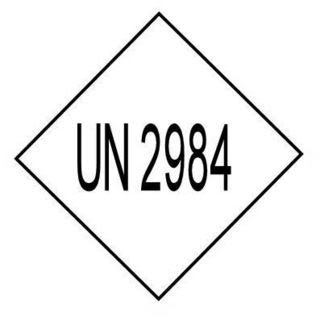jay jonezy:
Having had a time out break from H.G.V . driving class 2 only and only worked in delivering frozen food industry ive joined an agency and am currently working for and a local ish company my question is how much dangerous good can i transport on an 18 tonne 14 pallet wagon in layman terms please i.e how many 20 litre containers of oil or bleach
how many 50 litres drums of oil or chemicals
whats the limit on flammable items i can carry without an ADR
am i legal to carry a ibc container think theyre a 1000 litres, without an ADR ive tried looking online but its confusing , thank you for youre help
Hi jay jonezy,
I’m sorry, but there is no “layman terms” way of answering your question.
I’ll start by telling you that this isn’t your problem to solve, so please don’t worry about it.
ADR (and UK law) requires that anybody who carries any type of dangerous goods needs to have some ADR ‘awareness’ training, and for that training to be documented and relevant to whatever job needs to be done.
(This is NOT the same as an ADR licence, it is ONLY ‘awareness.’)
ADR also requires the carrier (= vehicle owner) to see to it that anybody they ask to move dangerous goods has had AT LEAST the awareness training. Therefore, the carrier should ask you (or your agency) whether you have had ADR ‘awareness’ training before engaging you to carry any dangerous goods.
An agency should see to it that you’ve had ADR ‘awareness’ training and keep a record of it.
Common sense (and the law) dictates that an agency should do this before sending you to a client that wants you to move dangerous goods.
![]() It’s all about the right people asking the right question at the right time, because if this is handled in a sensible way, then the ADR ‘awareness’ training can also count as a 7hr topic for your periodic DCPC all at the same time.
It’s all about the right people asking the right question at the right time, because if this is handled in a sensible way, then the ADR ‘awareness’ training can also count as a 7hr topic for your periodic DCPC all at the same time.
==================
In order to get anywhere near a good answer to your question, I’ll explain that ADR has a multitude of exemptions whereby sometimes you could even end up carrying full load of dangerous goods without even the need for anything, including paperwork. ![]()
There’s a lot of mind boggling detail about: the type of dangerous goods, they type and size of packagings and the amount to be carried. It is mind-boggling because ADR deals with this on a substance by substance basis. There’s then also the little problems caused by things like mixtures and solutions as well as the strength of the ‘stuff.’
Strange but true!!
As a (very) rough guideline… if the owner of the vehicle says that a load is not subject to the full requirements of ADR (= ADR licence, orange plates etc etc) then you’re good to go and the responsibility for that being correct rests squarely on HIS shoulders.
![]() Without the required ADR ‘awareness’ though, you’d be entitled to form your own opinion of the agency or the transport company.
Without the required ADR ‘awareness’ though, you’d be entitled to form your own opinion of the agency or the transport company.
![]() You could go it alone and get your own ADR ‘awareness’ though and count it as part of your legal requirement for 35hrs of periodic DCPC.
You could go it alone and get your own ADR ‘awareness’ though and count it as part of your legal requirement for 35hrs of periodic DCPC.
I hope this helps. ![]()


